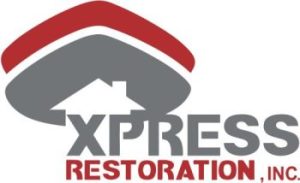Essential Steps in Fire Insurance Claims for Homeowners

Homeowner's Guide to Navigating Fire Insurance Claims
This guide explains what a fire insurance claim is and how it protects homeowners after a fire incident. Homeowners facing fire damage not only experience property loss but also the challenge of navigating insurance policies, documentation, and repairs. This article provides clear, actionable steps to prepare, file, and settle a fire insurance claim while detailing homeowners’ rights if a claim is denied or disputed. It also offers strategies to maximize settlements and practical tips to prevent future fire damage, with insights from property restoration specialists, such as Xpress Restoration Inc, and current industry practices. The guide is organized under key headings to ensure homeowners are well-equipped to handle all aspects of a fire insurance claim.
What Is a Fire Insurance Claim and How Does It Protect Homeowners?
A fire insurance claim is a formal request for compensation made by a homeowner to their insurance provider when fire-related damage occurs. It ensures financial support for repairs, replacements, or temporary living arrangements if the home becomes uninhabitable. The process involves detailed documentation of the damage, an evaluation by an adjuster, and a settlement based on the policy terms. By sharing the financial risk between the insurer and the homeowner, the policy provides peace of mind during stressful times.
What Types of Fire Damage Are Covered by Home Insurance?
Fire insurance generally covers: – Structural damage to the building – Loss or damage to personal property – Damage due to smoke and water used during firefighting It may also cover fire spreading to adjacent structures or liabilities for damages to neighboring properties. Some policies include additional perils such as explosion or lightning; however, coverage details vary. Homeowners should review their policies to understand deductibles, exclusions (e.g., pre-existing conditions or intentional arson), and specific terms to ensure all losses are properly documented and compensated.
How Does Fire Insurance Differ From Other Home Insurance Policies?
Fire insurance is a specialized component within a broader home insurancepolicy focusing on fire-related risks. Unlike general policies covering theft, weather incidents, or water damage, fire insurance addresses the unique needs that arise from a fire. Due to the distinct nature of fire damage—which may involve debris removal, temporary housing, and specialized restoration for smoke damage—claims require specific documentation and detailed evaluation to ensure proper compensation.
What Are Additional Living Expenses and When Are They Covered?
Additional living expenses (ALE) refer to costs incurred when a home is uninhabitable due to fire damage. Such expenses include temporary housing, meals, and other incidental costs during the recovery phase. ALE is typically covered if the home becomes unsafe or unlivable, but policies usually set limits on amount and duration. Homeowners must retain documents such as rental agreements, receipts, and invoices to support their claim and avoid out-of-pocket costs.
How Do You Prepare and File a Fire Insurance Claim?

Preparation is key when filing a fire insurance claim. Homeowners should: – Contact their insurer immediately upon discovering damage. – Arrange for an adjustment inspection. – Document all evidence by taking photographs, securing damaged items when possible, and recording witness statements. – Maintain detailed notes on the event, extent of damage, and emergency responses.
These steps create a comprehensive dossier that supports every aspect of the claim.
What Documents and Evidence Are Needed to Support Your Claim?
Essential documentation includes: – A completed and signed claim form – Photographic evidence capturing overall and specific damage – Receipts and invoices for repairs and temporary accommodations – A fire incident report from local authorities or the fire department – Inventory lists of affected personal belongings – Maintenance records showing the property’s condition prior to the fire Organizing these documents chronologically and keeping copies is crucial for a strong claim.
How to Report Fire Damage to Your Insurance Provider?
Reporting fire damage should be done immediately via the insurer’s designated hotline or online portal. Homeowners must provide key details such as the time and date of the incident, a summary of damages, and any emergency measures taken. Prompt reporting and subsequent organization of supporting documents help expedite the investigation and settlement process.
What Are Common Mistakes to Avoid When Filing a Fire Claim?
Common errors include: – Delaying the report of damage – Incomplete or disorganized documentation – Failing to fully understand policy details, such as deductible amounts and exclusions Additionally, omitting adequate photographs or clear records may weaken evidence. Prompt action, thorough documentation, and careful review of policy details can help avoid these pitfalls.
How Is a Fire Insurance Claim Assessed and Settled?
An insurance adjuster assesses the damage by inspecting the property and reviewing the provided evidence. The settlement is based on coverage limits, deductibles, and any depreciation applied to property and belongings. Homeowners may negotiate if the initial settlement does not seem to reflect their true losses. Objective evaluations based on industry standards help ensure fair compensation.
What Role Does the Insurance Adjuster Play in Your Fire Claim?
The adjuster verifies damage through on-site assessments, interviews, and reviewing repair estimates from professionals. Their expertise, combined with properly organized documentation, is critical in arriving at an accurate settlement figure. Maintaining good communication with the adjuster helps ensure that all pertinent details are considered.
How Are Fire Damage Repairs and Personal Property Losses Valued?
Valuation methods include: – Replacement Cost Value (RCV): The cost to replace damaged property with new items of similar quality. – Actual Cash Value (ACV): Factoring depreciation over time. Adjusters use contractor repair estimates and thorough inventories to determine accurate values for structural and personal losses.
What Factors Influence the Settlement Amount?
Settlement amounts are affected by: – Policy terms such as coverage limits and deductibles – The completeness and quality of documentation – Depreciation of items – Local market repair costs External factors, including the fire’s severity and responsiveness of emergency services, also play a role. Detailed preventive measures and comprehensive records can improve the final amount.
What Are Your Rights and Options if Your Fire Insurance Claim Is Denied or Disputed?

If a claim is denied or disputed, homeowners have rights and options: – Request a written explanation for the denial. – Appeal the decision by gathering additional evidence or independent appraisals. – Consider consulting a specialist fire insurance claims lawyer to navigate the dispute resolution process. Alternative methods such as mediation or arbitration may also be available. These steps help ensure a fair review of the claim.
How Can You Appeal a Fire Insurance Claim Denial?
To appeal a denial: – Obtain a detailed statement from the insurer outlining the reasons for the denial. – Review policy documents to identify inconsistencies. – Gather supplemental evidence like extra photographs, repair estimates, and independent appraisals. – Submit a written appeal and maintain a record of all correspondence. If necessary, seek legal assistance to bolster the appeal.
When Should You Consult a Fire Insurance Claims Lawyer?
Consult a lawyer if: – The claim denial significantly impacts your finances. – Negotiations with the insurer stall or become contentious. – There are gaps in the insurer’s assessment of your damages. A legal expert can help clarify policy details and enforce your rights during the appeal process.
What Are Common Dispute Resolution Methods for Fire Claims?
Dispute resolution methods include: – Direct negotiation between the homeowner and insurer – Mediation with a neutral third party – Arbitration, where an independent arbitrator’s decision is usually binding In some cases, litigation may be the final step if other methods fail.
How Can You Maximize Your Fire Insurance Claim Settlement?
To maximize your settlement: – Keep detailed records and all receipts. – Obtain multiple repair estimates. – Maintain an updated inventory of damaged items. – Understand all aspects of your policy, including limits and deductibles. Being well-prepared and informed can lead to better negotiation outcomes and higher compensation.
What Documentation Helps Strengthen Your Claim?
Strong documentation includes: – Immediate, detailed photographs of the damage – Repair estimates from reputable contractors – Receipts for emergency work or temporary living expenses Additionally, a comprehensive inventory with relevant purchase receipts, police or fire department reports, and documented witness statements greatly strengthens the claim.
How to Negotiate Effectively With Your Insurance Company?
Effective negotiation strategies include: – Preparing a detailed case file with all supporting documentation. – Clearly outlining the full extent of the damage with independent repair estimates. – Maintaining professional, polite communication with the insurer. In some instances, hiring a public adjuster can help push for a higher settlement if initial offers are low.
When Is It Worth Hiring a Public Adjuster or Legal Expert?
Consider hiring professional help when: – The complexity of your claim exceeds your ability to document adequately. – The settlement offer is significantly lower than expected. – Negotiation efforts with the insurance company have stalled. Public adjusters provide an independent evaluation, and legal experts can navigate complex policy language to ensure a fair outcome.
What Are the Typical Timelines and What Should You Expect During the Fire Claims Process?
The fire claims process typically follows these stages: – Initial reporting and adjuster appointment within a few days. – An assessment and documentation phase lasting 1–2 weeks. – A final settlement process that may take several weeks to months depending on policy specifics and any negotiations. Throughout the process, continuous communication with the insurer is essential.
How Long Does It Usually Take to Settle a Fire Insurance Claim?
Settlement generally takes between 30 and 90 days after submitting all documentation. Complex or disputed claims may require additional time. Homeowners should stay in close contact with their insurance provider and document every step to prevent delays.
What Are the Key Milestones in the Claims Journey?
Key milestones include: – Reporting the incident promptly. – Completing the adjuster’s visit and evidence collection. – Submitting all necessary documents. – Entering the negotiation phase. – Receiving the final settlement payment and beginning restoration work. Clear communication and organized documentation at each stage ensure a smoother claims process.
How to Follow Up and Track Your Claim Progress?
Effective follow-up involves: – Maintaining a log of all communications with the insurance adjuster. – Keeping copies of all submitted documentation. – Utilizing any online tracking tools provided by your insurer. – Requesting periodic written updates to address any delays promptly.
How Can Homeowners Prevent Fire Damage and Prepare for Future Claims?
Preventing fire damage is the most proactive step: – Install and regularly check smoke detectors, fire extinguishers, and sprinkler systems. – Schedule routine inspections for electrical wiring and heating systems. – Keep an updated inventory of personal property with photographs and receipts. Taking these measures reduces risk and helps streamline future claims if fire damage occurs.
What Fire Safety Measures Reduce Insurance Risks?
Key measures include: – Installing smoke detectors on every level. – Maintaining functional fire extinguishers. – Ensuring regular professional inspections of heating and electrical systems. – Implementing a fire escape plan and practicing drills. – Upgrading to fire-resistant materials where possible. These actions not only protect life and property but may also lower insurance premiums.
How to Document Your Property for Easier Claims?
Document your property by: – Creating a detailed inventory with photographs and purchase receipts. – Keeping appraisals for high-value items. – Regularly updating the inventory, especially after major improvements. – Backing up digital records on cloud storage or external drives for added security.
What Insurance Policy Features Should You Review Regularly?
Regularly review your policy to ensure: – Coverage limits meet your needs. – Deductibles and exclusions are clearly understood. – Additional living expense details are current. – Updates in policy terms after home improvements or market changes are reflected. Staying informed prevents gaps in coverage and financial surprises after a fire.
Table: Fire Insurance Claim Process Overview
Before diving deeper, consider this summary of the process:
| Stage of Process | Key Action | Typical Duration | Important Documentation | Impact on Settlement |
|---|---|---|---|---|
| Incident and Notification | Report fire damage immediately | Within 24-48 hours | Fire reports, photographs | Establishes timeline and urgency |
| Initial Assessment | Adjuster visits and evaluates damage | 1-2 weeks | Repair estimates, inventory lists | Forms basis for claim valuation |
| Documentation and Submission | Submit detailed claim documents | Concurrent with assessment | Receipts, invoices, additional evidence | Strengthens evidence for negotiation |
| Negotiation and Dispute Resolution | Negotiation, mediation, or legal action | 30-90 days or more | Communication logs, expert evaluations | Determines final settlement amount |
| Settlement and Restoration | Receive payment and begin repairs | Post-negotiation | Final estimates, contract work orders | Enables timely and adequate restoration work |
This table provides an overview of key steps and the necessary documentation to help track progress and prepare effectively.
Frequently Asked Questions
Q: What is a fire insurance claim? A: It is a formal request for payment submitted by a homeowner to cover fire-related damage costs including repairs, personal property replacement, and additional living expenses.
Q: How soon should a fire insurance claim be reported? A: Report immediately, ideally within 24-48 hours, to ensure a prompt assessment and preservation of evidence.
Q: What documents are essential for supporting a fire insurance claim? A: A completed claim form, comprehensive photographic evidence, repair estimates, receipts for emergency expenses, a detailed inventory, and official fire reports.
Q: What factors affect the final settlement amount in a fire claim? A: Policy specifics such as coverage limits, deductibles, depreciation, the quality of documentation, and local repair costs, as well as the severity of the incident.
Q: How can homeowners maximize their fire insurance claim settlement? A: By documenting damages thoroughly, obtaining multiple repair estimates, maintaining up-to-date property inventories, and engaging in effective negotiations. Consultation with a public adjuster or lawyer might help in disputes.
Q: When should I consider hiring a public adjuster or legal expert? A: If the settlement offer is significantly low, if the claim is complex or disputed, or if negotiations stall, professional assistance can help secure a fair settlement.
Q: What are additional living expenses (ALE) in the context of fire insurance? A: ALE covers costs for temporary housing, meals, and other necessities when a home is uninhabitable due to fire damage. These benefits are subject to policy limits and duration.
Final Thoughts
This guide has outlined the process of navigating a fire insurance claim—from understanding basic concepts and preparing necessary documentation to negotiating disputes and maximizing settlements. Proactive measures, thorough recordkeeping, and clear communication are essential in mitigating financial hardship after a fire. By staying informed and prepared, homeowners can restore their property and return to normal life with confidence.
Get Your Free Assessment!
Fast & Reliable Water Damage Cleanup in Chula Vista
Water emergencies can happen when you least expect them—whether it’s a burst pipe, slab leak, appliance failure, or sudden flooding. That’s why Xpress Restoration offers 24/7 expert water damage cleanup in Chula Vista, ensuring immediate response when disaster strikes. Our highly trained team specializes in rapid water extraction, drying, and damage mitigation, helping to prevent further structural issues and mold growth. With advanced technology and precision cleanup techniques, we take care of every detail so your property is restored as quickly and efficiently as possible.
At Xpress Restoration, we know how urgent water damage situations can be, which is why we act fast to minimize risks and protect your home or business. Our comprehensive water damage cleanup in Chula Vista includes full-scale extraction, debris removal, and restoration, customized to your unique needs. Whether it’s a minor leak or a major flood, we have the expertise and equipment to handle it all. Trust the experts at Xpress Restoration for professional water damage cleanup in Chula Vista—restoring your property and peace of mind. Contact us today for immediate assistance!

